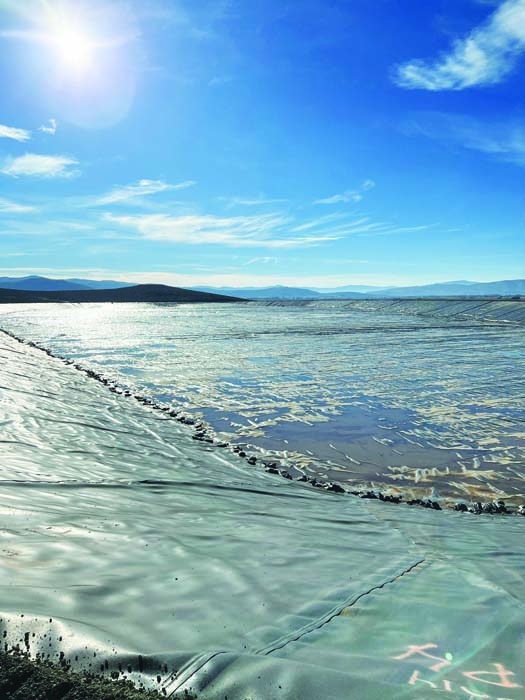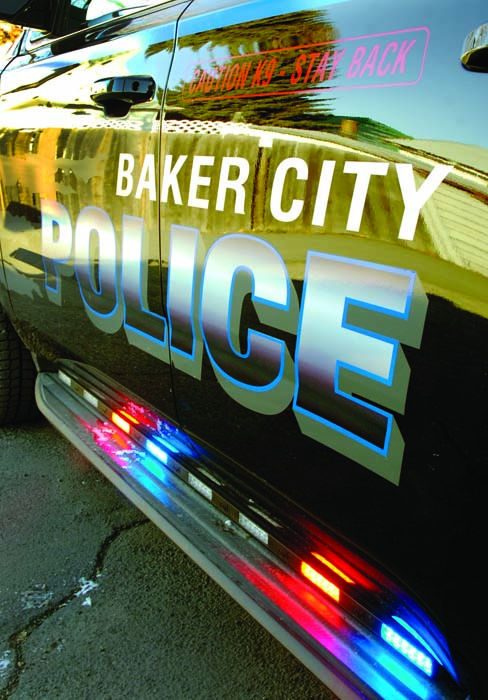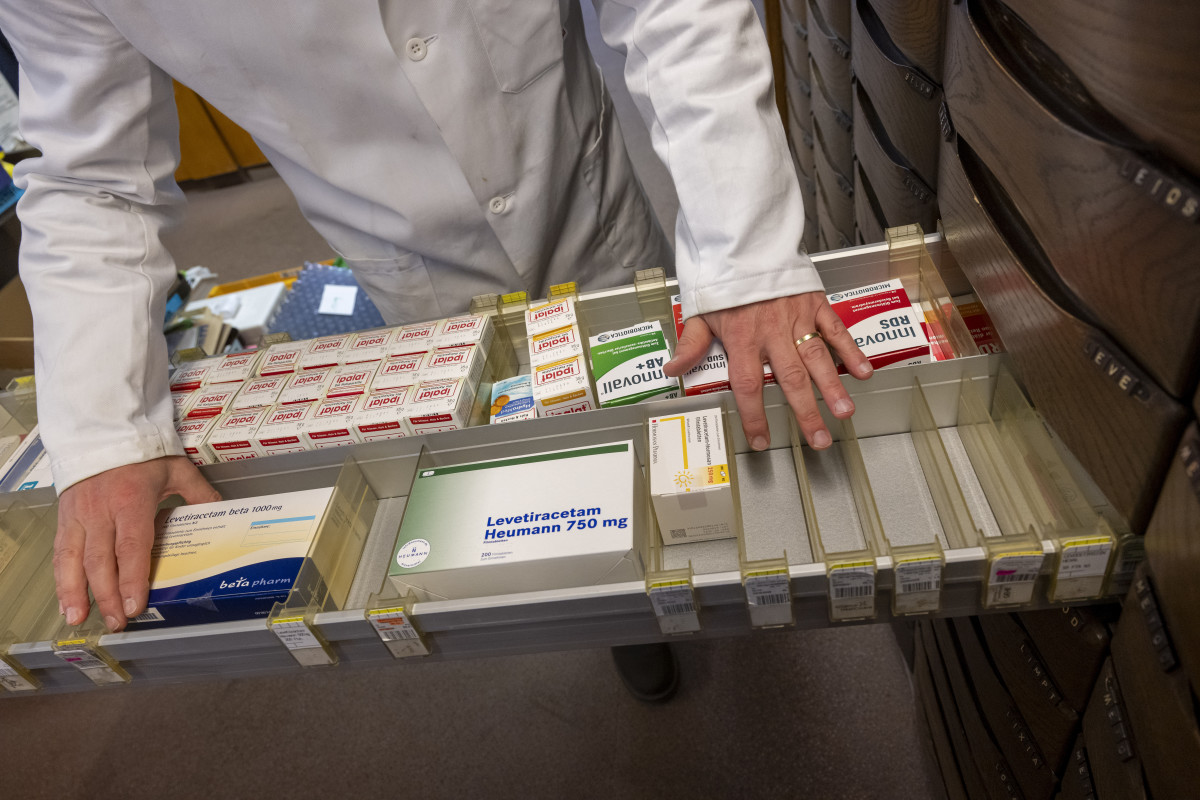Baker City’s multimillion-dollar sewer lagoon, subject of lawsuit, remains empty, unused pending repairs to liner
Published 11:08 am Monday, May 19, 2025

- A liner was installed in the fall of 2021 at Baker City's new wastewater storage lagoon east of the Baker City Airport and south of Highway 203. City officials detected leaks in the liner in 2022, and repairs made in the fall of 2023 weren't successful, according to public works director Joyce Bornstedt.
More than three years after Baker City’s most expensive sewer project in decades was finished, it sits empty and unused.
The lagoon built to store wastewater, part of a $5.7 million project for which the city will be paying for the next nearly 30 years, is also the subject of a lawsuit the city filed in June 2024 related to leaks that prompted the city to drain the lagoon in 2023.
The lagoon is on a 51-acre parcel the city bought in 2019 at the eastern edge of Baker Valley, just south of the Medical Springs Highway.
Trending
The project includes a 7-mile pipeline that connects the city’s network of four smaller lagoons, which are near Imnaha Road about a mile north of Baker City and were built in the early 1960s, with the new lagoon.
The city borrowed the money for the project from the state and will repay the loan over 30 years with an interest rate of 1.36%.
The lagoon is lined with a layer of high-density polyethylene designed to prevent wastewater from leaking into the ground.
The city hired Gyllenberg Construction of Baker City for the project. The company’s subcontractor was Northwest Linings, according to the lawsuit that the city’s attorney, Dan Van Thiel, filed almost a year ago.
The defendant is Anderson Perry & Associates of La Grande, the firm the city hired to design the sewer project.
The city is seeking $81,996 from Anderson Perry, the amount that Gyllenberg Construction requested the city pay for repairs the company made to the lagoon liner, which was installed in the fall of 2021 but leaked when the lagoon began to fill in June 2022.
Trending
At that time, humps in the liner — known as “whales” — appeared, indicating possible leaks, according to the lawsuit.
In June 2023 the city started to empty the lagoon so engineers could examine the liner.
In late September 2023, Northwest Linings repaired sections of the liner.
After the city started refilling the lagoon that fall, whales again appeared in the liner, according to the lawsuit.
Gyllenberg Construction requested $81,996 from the city for the liner repairs on Nov. 9, 2023, according to the lawsuit.
Joyce Bornstedt, the city’s public works director, said recently that the city won’t be able to use the lagoon until the liner is replaced.
It’s not clear how much that will cost, but Bornstedt said the bill would be higher than the $81,996 the city is seeking from Anderson Perry through the lawsuit.
In the lawsuit, the city contends that Anderson Perry’s design of the lagoon was defective.
In a response to the lawsuit, filed in September 2024, the company’s attorney, Jan D. Sokol of Portland, wrote that Anderson Perry is not liable for repair costs “because it met the applicable standard of care for a reasonably competent and prudent engineer providing similar services to those AP (Anderson Perry) provided. …”
Sokol asked that the court dismiss the city’s lawsuit. That has not happened.
A status check on the lawsuit is scheduled for June 2 at 1:45 p.m. in Baker County Circuit Court.
Lagoon’s purpose
The lagoon and pipeline, which comprise the most expensive wastewater project in the city in more than two decades, was prompted by the Oregon Department of Environmental Quality (DEQ) telling city officials more than a decade ago that eventually the agency would not allow the city to pipe treated wastewater into the Powder River.
That’s how the city has disposed of treated wastewater from its four older lagoons, which are near the river, for more than half a century.
DEQ told city officials that treated wastewater could promote algae blooms and otherwise pollute the river.
The new lagoon, which is 20 feet deep compared with the existing lagoons’ depth of 6 to 8 feet, also increases the city’s capacity to store wastewater, Bornstedt said. The pipeline allows the city to move wastewater between the new and old lagoons.
Rather than piping wastewater into the river, the city plans to use water from the new lagoon to irrigate nonfood crops on private land near the lagoon.
DEQ has denied the city’s application to use wastewater for irrigation on some of that land due to a shallow groundwater table and soils that don’t readily absorb water.
Since the leaks were detected in 2022 and the new lagoon drained to facilitate repairs — the water was pumped via the new pipeline to the old lagoons — the city has been storing wastewater in the old lagoons and continuing to release treated water into the river.
The city still has a permit from DEQ to do so.
On March 14 of this year, Baker City Manager Barry Murphy, along with Erin Saylor, interim manager for DEQ’s Office of Compliance and Enforcement, signed an agreement regarding the concentrations of certain pollutants in the treated wastewater the city releases into the Powder River near the lagoons north of town.
Those limits were set in a permit DEQ issued to the city in 2003. They include limits on pH level of the water, the amount of suspended solids in the water, and the “biochemical oxygen demand.”
The latter measures the oxygen used by aerobic bacteria that decompose organic matter in water. A higher level means more organic pollution in the water, which can result in lower oxygen levels in the water that are harmful to fish and other aquatic life.
Under the March 14 agreement, DEQ will not assess fines against the city if the treated water exceeds those limits but doesn’t exceed the higher interim limits included in the agreement.
Limits in the 2003 permit and the new agreement:
Biochemical oxygen demand
Average concentrations
Monthly
2003 permit: 45 milligrams/liter
2025 agreement: 66 mg/L
Weekly
2003 permit: 65 mg/L
2025 agreement: 75 mg/L
Monthly average pounds per day
2003 permit: 750
2025 agreement: 1,100
Weekly average pounds per day
2003 permit: 1,100
2025 agreement: 1,650
Daily maximum
2003 permit: 1,500 pounds
2025 agreement: 2,200 pounds
Total suspended solids
Average concentrations
Monthly
2003 permit: 85 milligrams/liter
2025 agreement: 100 mg/L
Weekly
2003 permit: 140 mg/L
2025 agreement: 150 mg/L
Monthly average pounds per day
2003 permit: 1,400
2025 agreement: 1,700
Weekly average pounds per day
2003 permit: 2,100
2025 agreement: 2,550
Daily maximum
2003 permit: 2,800 pounds
2025 agreement: 3,400 pounds
The March 2025 agreement also requires that the city, by Aug. 31, 2026, submit to DEQ a plan to repair the lagoon, and to start repairs no later than July 1, 2027.
Bornstedt said that although the city neared the capacity of its older lagoons this winter, the March agreement allows the city to discharge water into the river longer, which helps alleviate the capacity concern.
The city treats wastewater with chlorine to kill bacteria, then adds sulfur dioxide to neutralize the chlorine before the water is released into the river.









